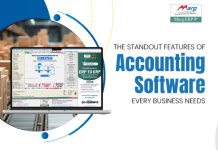A balance sheet is a financial statement that provides a snapshot of a company’s financial position at a specific point in time. It is an essential tool for investors, creditors, and other stakeholders to assess a company’s financial health. A properly formatted balance sheet contains several key sections, each with its own set of headings. In this blog, we’ll outline the standard format for a balance sheet and provide an overview of the headings used.
I. Assets
A. Current Assets
- Cash and Cash Equivalents: This heading includes the actual cash held by the company, as well as highly liquid assets that are readily convertible into cash, such as money market funds and short-term treasury bills.
- Short-term Investments: Here, you will find investments that are expected to mature or be sold within one year, such as certificates of deposit (CDs) or government bonds.
- Accounts Receivable: This category represents the amounts owed to the company by its customers for goods sold or services rendered. It includes trade receivables and any provisions for doubtful debts.
- Inventory: This heading encompasses the value of raw materials, work-in-progress, and finished goods held by the company for sale or production.
- Prepaid Expenses: Prepaid expenses include payments made in advance for future services or benefits, such as prepaid rent, insurance premiums, or advertising expenses.
B. Non-Current Assets
- Property, Plant, and Equipment (PP&E): This section comprises tangible assets used in the company’s operations, including land, buildings, machinery, and vehicles. It also includes accumulated depreciation, which reflects the portion of the asset’s value that has been expensed over its useful life.
- Intangible Assets: Intangible assets represent non-physical assets that provide value to the company. This includes intellectual property, such as patents, copyrights, trademarks, and brand value, as well as goodwill arising from acquisitions.
- Long-term Investments: Here, you’ll find investments in other companies, bonds, or long-term notes that are not expected to be liquidated within one year.
II. Liabilities
A. Current Liabilities
- Accounts Payable: This heading captures the amounts owed by the company to its suppliers or vendors for goods received or services rendered but not yet paid.
- Short-term Debt: Short-term debt includes obligations that are due within one year, such as lines of credit, short-term loans, or the current portion of long-term debt.
- Accrued Expenses: Accrued expenses are costs that have been incurred but not yet paid. This includes accrued salaries, taxes payable, utilities, or interest.
B. Non-Current Liabilities
- Long-term Debt: Long-term debt includes loans, bonds, or other obligations with maturities exceeding one year.
- Deferred Taxes: This heading represents the portion of taxes that will be paid in future periods due to temporary differences between book and tax accounting methods.
III. Equity
The equity section of the balance sheet represents the ownership interest in the company. It consists of:
- Common Stock: Common stock represents the shares issued to shareholders, reflecting their ownership rights in the company.
- Additional Paid-in Capital: This category accounts for the amount of capital raised through the issuance of stock in excess of its par or stated value.
- Retained Earnings: Retained earnings reflect the accumulated net profits or losses that have not been distributed to shareholders as dividends.
- Treasury Stock: If the company repurchases its own shares, the cost of those shares is subtracted under this heading.
Conclusion
By adhering to these headings, a balance sheet becomes an organized and comprehensive financial statement. It provides stakeholders with valuable insights into a company’s financial position, liquidity, solvency, and overall performance. Understanding the structure and content of a balance sheet is crucial for analyzing and evaluating the financial health of a business.
Frequently Asked Questions (FAQs)
What is a balance sheet?
A balance sheet is a financial statement that provides a snapshot of a company’s assets, liabilities, and shareholders’ equity at a specific point in time.
What is the purpose of a balance sheet?
The primary purpose of a balance sheet is to present a clear overview of a company’s financial position, including its resources, obligations, and net worth, allowing stakeholders to assess its financial health and make informed decisions.
How often should a balance sheet be prepared?
Balance sheets are typically prepared at the end of each accounting period, usually quarterly or annually, to reflect the financial status of the company.
What are current assets and current liabilities?
Current assets are assets that are expected to be converted into cash or used up within one year, such as cash, accounts receivable, and inventory. Current liabilities are obligations that are due within one year, including accounts payable and short-term debt.
What is the difference between current and non-current assets/liabilities?
Current assets/liabilities are short-term in nature and expected to be realized or settled within one year. Non-current assets/liabilities are long-term in nature and have a longer maturity or holding period, usually exceeding one year.
How is shareholders’ equity calculated?
Shareholders’ equity is calculated by subtracting a company’s total liabilities from its total assets. It represents the residual interest in the company after all obligations have been fulfilled.
What is the significance of the balance sheet equation (Assets = Liabilities + Equity)?
The balance sheet equation is a fundamental accounting principle that ensures the equality between a company’s assets, which it owns or controls, and its liabilities plus equity, which represent the sources of funds used to finance those assets.
How can I analyze a balance sheet?
You can analyze a balance sheet by examining key ratios such as the current ratio (current assets divided by current liabilities) to assess liquidity, debt-to-equity ratio (total debt divided by shareholders’ equity) to evaluate leverage, and return on equity (net income divided by shareholders’ equity) to measure profitability.
Can a balance sheet show future projections or forecasts?
No, a balance sheet provides a snapshot of a company’s financial position at a specific point in time and does not include future projections or forecasts. Projections are typically presented in separate financial statements, such as the income statement and cash flow statement.
How does a balance sheet differ from an income statement?
While a balance sheet reflects a company’s financial position at a specific point in time, an income statement (also known as a profit and loss statement) summarizes a company’s revenues, expenses, gains, and losses over a period of time to determine its net income or net loss.




















